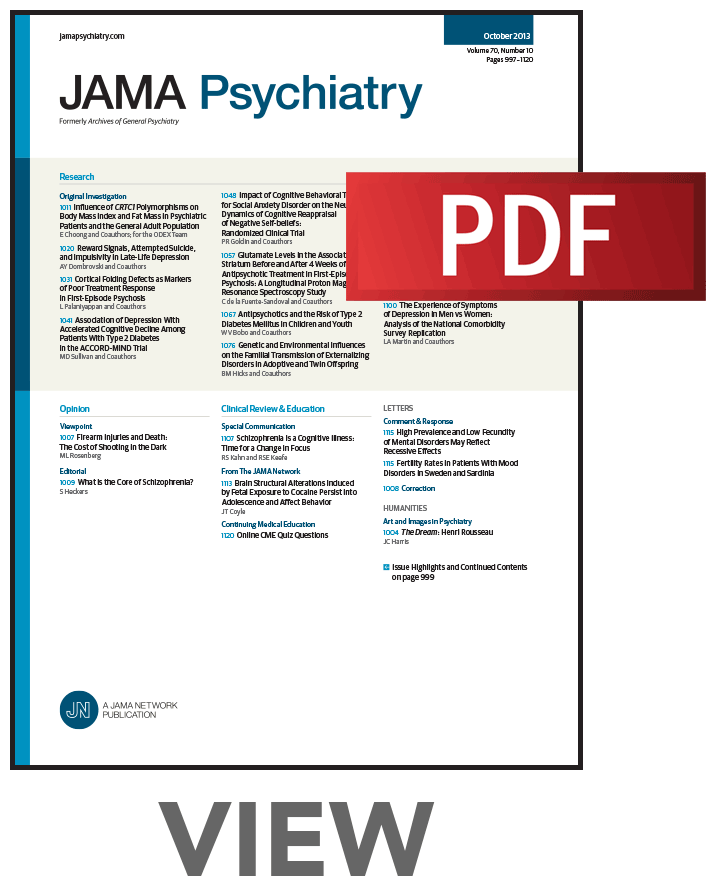Cross-Species Framework for Emotional Well-Being and Brain Aging: Lessons From Behavioral Neuroscience.
IF 17.1
1区 医学
Q1 PSYCHIATRY
引用次数: 0
Abstract
Importance Emotional well-being (EWB) is an emerging therapeutic target for managing and preventing symptoms associated with Alzheimer disease and related dementias (ADRD). However, more research is needed to establish causal inferences between brain changes, EWB, and behavioral changes observed in typical aging and ADRD. Observations This article presents a framework for using a cross-species behavioral neuroscience approach to study EWB and brain aging, adopting a well-established biobehavioral model that highlights the reciprocal roles of brain changes, EWB, and ADRD symptoms. First, the challenges and opportunities in this field are reviewed. Then, a practical solution to improve comparability between animal and human studies is proposed. Conclusions and Relevance The goal is to draw comprehensive parallels and distinctions that could enhance the understanding of the mechanisms linking brain aging, EWB, and ADRD symptomatic disturbances across different species.情绪健康和大脑衰老的跨物种框架:来自行为神经科学的教训。
情绪健康(EWB)是管理和预防阿尔茨海默病和相关痴呆(ADRD)相关症状的新兴治疗靶点。然而,在典型的衰老和ADRD中观察到的大脑变化、EWB和行为变化之间的因果关系需要更多的研究。本文提出了一个使用跨物种行为神经科学方法研究EWB和大脑衰老的框架,采用了一个完善的生物行为模型,该模型强调了大脑变化、EWB和ADRD症状之间的相互作用。首先,回顾了该领域面临的挑战和机遇。然后,提出了一种实用的解决方案,以提高动物和人类研究之间的可比性。结论和相关性我们的目标是得出全面的相似之处和区别,以增强对不同物种之间脑衰老、EWB和ADRD症状障碍的机制的理解。
本文章由计算机程序翻译,如有差异,请以英文原文为准。
求助全文
约1分钟内获得全文
求助全文
来源期刊

JAMA Psychiatry
PSYCHIATRY-
CiteScore
30.60
自引率
1.90%
发文量
233
期刊介绍:
JAMA Psychiatry is a global, peer-reviewed journal catering to clinicians, scholars, and research scientists in psychiatry, mental health, behavioral science, and related fields. The Archives of Neurology & Psychiatry originated in 1919, splitting into two journals in 1959: Archives of Neurology and Archives of General Psychiatry. In 2013, these evolved into JAMA Neurology and JAMA Psychiatry, respectively. JAMA Psychiatry is affiliated with the JAMA Network, a group of peer-reviewed medical and specialty publications.
 求助内容:
求助内容: 应助结果提醒方式:
应助结果提醒方式:


